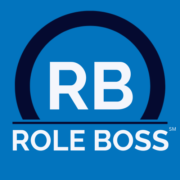Leadership is a journey that unfolds over time, shaped by self-awareness, learning, and experience. Developing your leadership style doesn’t happen overnight—it’s a continual process of growth, adaptation, and refinement. As leaders, we must evolve to meet the changing needs of our teams and organizations, learning from both our successes and our failures. This post explores the phases of leadership development and offers practical advice on how to find, build, and improve your unique leadership approach.
The Command and Control Phase: Early Leadership Lessons
Many leaders start their journey with a command-and-control mindset. I remember my own early career, believing that authority equaled control. My role, as I saw it then, was to set strict standards, direct every detail, and ensure each task was completed exactly as I envisioned. This approach maintained order and achieved results, but it didn’t empower or engage my team. I was focused on managing people to get things done, not on helping them grow.
This mindset limited my team’s potential and left me overseeing every task, which was exhausting and stifling for all of us. In this phase, I only trusted those who could match my standards. However, I soon realized that real leadership wasn’t about ensuring tasks were done my way. Instead, it was about creating a vision that everyone could align with and contribute to in their own way.
Shifting to Servant Leadership
As I moved up in my career, my perspective on leadership changed. I began to understand that true leadership required trust, empowerment, and partnership. I saw that my team was more than a group of people to manage—they were individuals with unique strengths. Recognizing their value led me to embrace a servant leadership approach.
This wasn’t just a theoretical shift; it manifested in our daily operations. I learned a valuable lesson from one of my managers, who kept daily directives on his office window for everyone to see. This simple strategy allowed the team to understand expectations without needing to interrupt him. Inspired by this, I encouraged my team to find ways to make information more accessible, fostering an environment of autonomy and trust. By shifting from being directive to supportive, I wasn’t just leading them; I was enabling them to lead themselves.
Evolving Leadership: Embracing Flexibility and Growth
Leadership isn’t static. Over time, I realized that my leadership style needed to evolve alongside the growth of my team and the goals of the organization. Transitioning from a strict manager to a supportive leader meant letting go of control and embracing a flexible, growth-oriented mindset. The shift was challenging, especially when I realized that I didn’t always have to be right or in control.
At one point, I was deeply attached to the notion that admitting mistakes or letting others lead would make me look weak. But gradually, I recognized that humility and flexibility were strengths, not weaknesses. When I began to let others shine, I found more satisfaction in my role and could focus on broader strategic goals, knowing my team was capable and motivated.
One of the most valuable lessons I learned was not to take myself too seriously. Instead of striving for perfection, I focused on progress and growth—both my own and my team’s. This shift enabled me to truly celebrate my team’s successes. I no longer felt diminished by their achievements; I felt proud to have helped guide them there.
Empowering Others to Lead: Building a High-Performance Team
Leadership isn’t about doing everything yourself—it’s about creating more leaders. By empowering others, you cultivate a resilient, capable team that can take on challenges confidently. As I transitioned to a servant leadership approach, I found that giving my team the tools, guidance, and trust they needed transformed our team’s dynamic.
One of my proudest career moments was receiving a leadership plaque from my team. They recognized that my shift from control to empowerment wasn’t just a professional move; it was a personal one that transformed our team’s culture. That plaque still reminds me that true leadership is about helping others reach their potential, not about accumulating personal achievements. When leaders empower their teams to take the reins, they create an environment where people are motivated to grow and succeed.
To foster a team of independent, engaged leaders, it’s essential to create opportunities for your team members to exercise leadership. Delegate decision-making responsibilities, encourage creative problem-solving, and support your team as they navigate challenges. By empowering others, you’re not only building a high-performing team but also ensuring sustainable success for your organization.
Conclusion
Developing your unique leadership style takes time, experience, and a willingness to evolve. By focusing on growth, trust, and empowerment, you’ll become the kind of leader who not only achieves goals but also inspires others to grow alongside you. If you’re ready to take the next step in your leadership journey, explore more insights on RoleBoss.com. Join our newsletter to receive actionable leadership advice and strategies delivered directly to your inbox.



